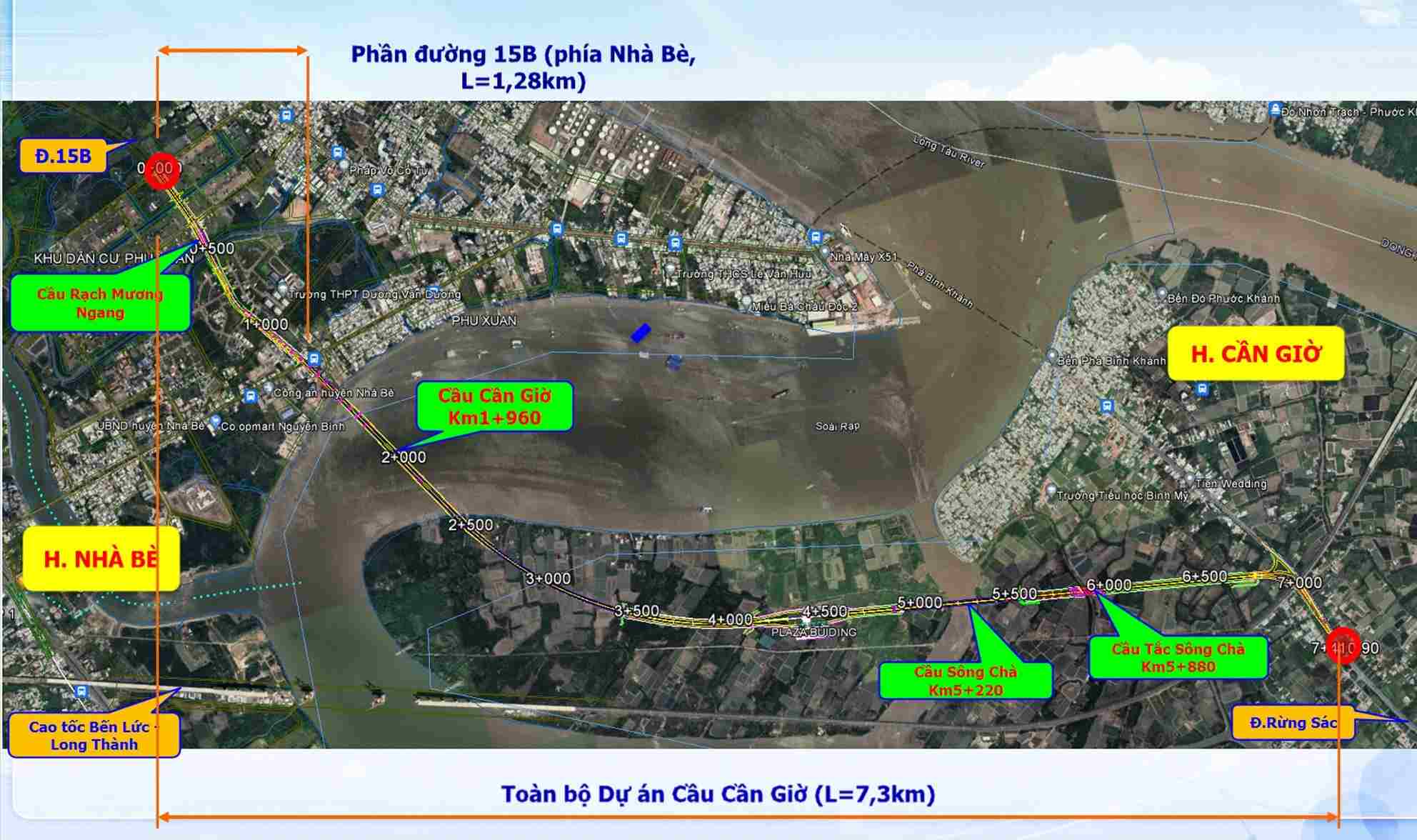Vice Chairman of Ho Chi Minh City People's Committee Bui Xuan Cuong has just assigned the Department of Construction to urgently synthesize and complete the dossiers of the two investment options for Can Gio Bridge.
Option 1: Public investment, ensuring conditions and procedures to submit to the Ho Chi Minh City People's Council for approval of the investment policy at the December 2025 session; developing detailed progress milestones for each work content.
Option 2: Investing under the public-private partnership (PPP) method, ensuring the expected start date of January 15, 2026.

Previously, from December 2023, the pre-feasibility study report of the Can Gio bridge project was completed by the Department of Transport (now the Department of Construction) and submitted to the City Appraisal Council.
However, because at that time the general planning of Ho Chi Minh City until 2040, with a vision to 2040, had not been approved, the Can Gio bridge project did not have enough basis to submit to the Ho Chi Minh City People's Council for consideration of the investment policy.
Currently, the city's general planning has been approved, Ho Chi Minh City wants to speed up procedures to implement the project.
The Can Gio bridge project is receiving the attention of a number of businesses and corporations proposing investment in the form of BT (build - transfer).
Currently, Trung Nam Construction Investment Joint Stock Company (Trungnam Group), Masterise Group Joint Stock Company is proposing to participate in investing in the project.
According to the previous pre-feasibility study report prepared by the Department of Transport in 2023, Can Gio Bridge has a total length of 7.3 km, of which the main bridge is nearly 3 km long and the approach road is more than 4.3 km long.
The project has a scale of 6 lanes (including 4 lanes for motor vehicles, 2 lanes for non-motor vehicles) with a design speed of 60 km/h. The total investment capital of the project is estimated at about 11,000 billion VND.
The bridge is built in the form of a cable-stayed bridge, with a 55 m clearance (equivalent to Binh Khanh bridge of the Ben Luc - Long Thanh expressway project) - the highest in Vietnam at the present time. Can Gio Bridge will also be the largest cable-stayed bridge in Ho Chi Minh City.
In addition to the main bridge, the project also builds three more bridges on the route: Song Cha Bridge (about 640.5 m long, 29.5 m wide); Tac Song Cha Bridge (about 64.2 m long, 40 m wide); Rach Muong Ngang Bridge (on the parallel road on the Nha Be side) is 64.2 m long, 7.75 m wide.

Regarding the route, the starting point of the bridge is on Road 15B (Nha Be District), about 500 m north of Muong Ngang Canal, then cut through Nguyen Binh Street and cross the Soai Rap River. When reaching Can Gio, the bridge will connect with Rung Sac road at a location about 2.1 km south of Binh Khanh ferry.
Can Gio is about 50 km from the center of Ho Chi Minh City, currently connecting mainly via Binh Khanh ferry. However, the ferry is overloaded, especially on weekends when the traffic has to wait for hours to cross the river.
To increase access to Can Gio, the high-speed train route from Bach Dang wharf to Binh Khanh commune has been restored.
Previously, Can Gio Urban Tourism Joint Stock Company sponsored three 200-ton ferries for Binh Khanh wharf, including fuel, labor and operation costs to reduce congestion while waiting for the construction of Can Gio bridge.
In addition to Can Gio Bridge, many other key infrastructure projects are expected to create a boost in the development of Can Gio area such as the high-speed metro line directly connecting the center of Ho Chi Minh City - Can Gio, the intersection of Rung Sac Road with Ben Luc - Long Thanh Expressway, the Can Gio sea-crossing route, the Can Gio Sea Urban Tourism Project.
When completed simultaneously, these projects will form a strong network of connections, creating a foundation for Can Gio to make a breakthrough in economy, tourism and urban areas.











